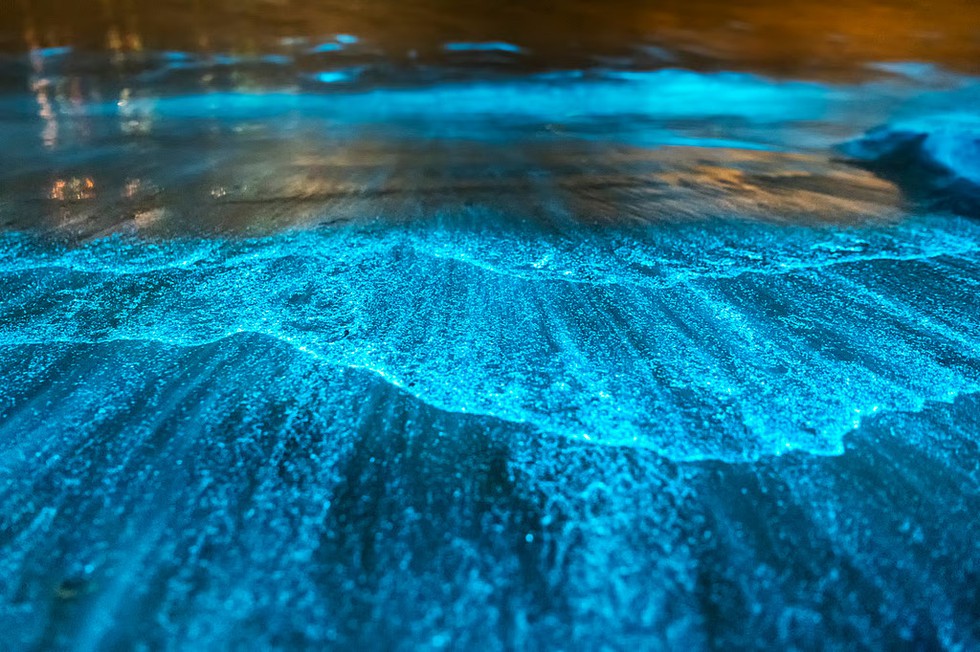
Bioluminescent Backwaters

12.04.2025
Bioluminescent Backwaters
|
For Prelims: About Bioluminescence |
Why in the news?
Recently, bioluminescent blue waves were observed in the backwaters of Kochi, Kerala, attracting tourists but raising concerns among ecologists and fishers due to underlying environmental degradation.
About Bioluminescence
- Bioluminescence refers to the natural emission of light by organisms such as bacteria, fungi, and algae triggered by mechanical disturbances in coastal and estuarine waters.
- The species most commonly responsible is Noctiluca scintillans, a type of dinoflagellate plankton, also known as “sea sparkle”.
- This glow results from chemical reactions inside specialized structures called scintillons and appears primarily blue but can also show red or brown hues depending on species concentration.
- The phenomenon is commonly observed from March to May, locally termed as "Kavaru" in Malayalam.
Scientific Background
- Eutrophication—caused by nutrient overload (especially nitrates and phosphates) from industrial runoff and sewage discharge—is a major driver.
- Salinity levels between 30-35 ppt, rising temperatures, and reduced rainfall contribute to their
- When concentrations exceed 500,000 organisms per litre, it leads to red tides, which can severely disrupt marine ecosystems.
Ecological and Economic Impacts
- Plankton, while a key part of marine food chains, in large numbers release substances like dimethyl sulphide, ammonium, and dissolved organic carbon, causing Harmful Algal Blooms (HABs).
- HABs lead to hypoxia (oxygen depletion), resulting in mass fish mortality and affecting biodiversity and aquaculture
- Fishing communities experience significant losses as fish migrate away from bloom-affected zones, leading to declining catches and reduced income.
- Toxins such as domoic acid and those from Alexandrium can cause amnesic or paralytic shellfish poisoning, harming both marine life and human health.
Source: Down to earth
‘Noctiluca scintillans’, often referred to as “sea sparkle”, is associated with which of the following natural phenomena?
A.Coral bleaching
B.Red tide formation
C.Bioluminescence in marine waters
D.Ocean acidification
Answer C